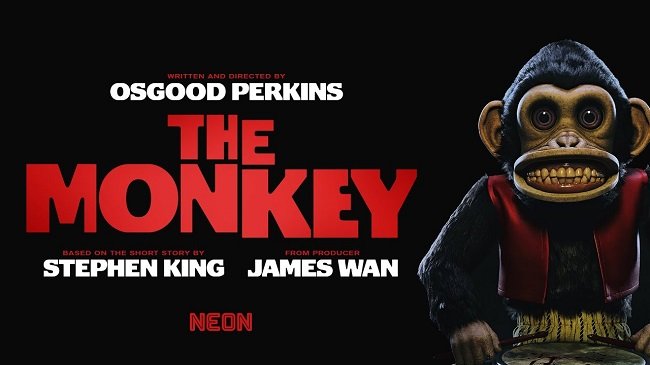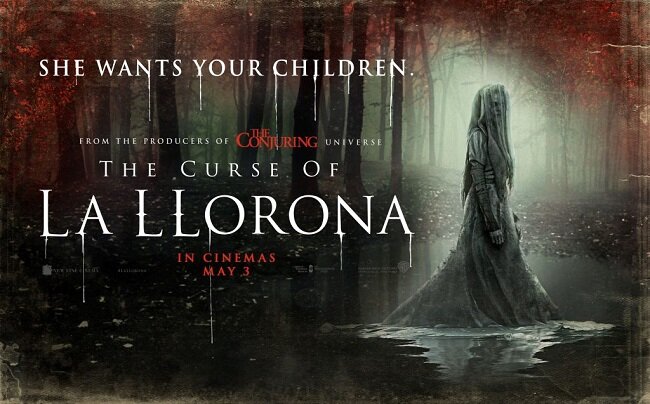Longlegs (2024)
Although I was unaware of it, there was a guerrilla marketing campaign for Longlegs which was focused on the internet rather than traditional television adverts. Hence the film gained a lot of interest prior to its release and as well as some some disproportionate expectations. Then immediately after its theatrical debut, the matter was further compounded by a possible excess of gushing praise as the film was “over reviewed”. Therefore I maintained a degree of scepticism about Longlegs and tempered my expectations prior to watching it. Any film that is hailed as the next Silence of the Lambs, featuring a “traumatising” performance by Nicholas Cage needs to be keenly scrutinised so that its cinematic merits can be carefully separated from the surrounding hyperbole. After viewing I found Longlegs to be a finely honed, atmospheric and precisely targeted horror thriller but not the genre milestone that some would claim.
During the 1990s, FBI agent Lee Harker (Maika Monroe) is assigned by her supervisor William Carter (Blair Underwood) to an investigation of a series of murder-suicides in Oregon. In each case a father kills his family and then himself, leaving behind a letter with Satanic coding signed “Longlegs”. The handwriting belongs to a third party and not a family member. Hence Carter suspects that the crimes may have been instigated. Lee, who possibly has latent psychic powers, determines that each family had a 9-year-old daughter born on the 14th of the month. Furthermore, the murders all occurred within six days before or after the birthday itself and the murders form an occult triangle symbol on a calendar. Curiously, one date is missing. While talking to her mother Ruth (Alicia Witt), Lee receives a coded birthday card from Longlegs, warning her that revealing the source of the code will lead to her mother's murder.
Director Osgood Perkins creates a vivid visual and aural landscape which immediately draws the audience into the brooding sense of disquiet. The ambient soundtrack by Zilgi is sparse and often music is replaced by ominous tonal sounds. Perkins also furnishes just enough information both visually and within his screenplay, to keep viewers engaged but forcing them to fill in the narrative gaps themselves. At one point a character is shown to have a substantial supply of medication. Exactly what it is for is never specifically explained. Is it to treat a psychiatric condition of a specific illness? A character refers to the remote location where they and their daughter live and how no one visits them. Is this due to her being an unwedded mother or having some form of mental illness? Both would potentially make them a social pariah in small town America, during the sixties.
Nicholas Cage’s notable performance is not overplayed and his character only makes a few appearances during the film’s first act. His face is obscured initially and it is only during an FBI interrogation scene that we become aware of his curious demeanour. Again whether he is an albino or has acquired such a complexion by avoiding sunlight is never made clear. It is while he is questioned by agent Harker that Cage ups the ante and we become aware that he is not just another broken human being who has morphed into a serial killer. It is at this point that the film commits to a more overtly supernatural plotline, where initially it was deliberately more ambiguous. Beforehand, the murders and associated events could be potentially explained in more conventional terms.
Cinematographer Andrés Arochi does much to build the atmosphere. There are many night scenes with deep shadows and strong, contrasting pools of light. The overall colour palette is somewhat muted but white and red are used vividly. As a result the viewer is kept absorbed by the film’s aesthetic and it doesn’t immediately become apparent that this is a modest budget production with only a handful of characters. There are sufficient jump scares and a couple of scenes of jolting violence, to keep the audience's appetite sated for the staples of the horror genre. The film’s ending is as you would expect, given what has proceeded. Yet despite the series of murders and the implications of direct, satanic intervention, the film still feels restrained in its scope and doesn’t quite have the impact of a cinematic event that some claim it to be. However, less can be more and Longlegs is definitely superior to mainstream horror fare. Osgood Perkins is also a director to keep an eye on.






























